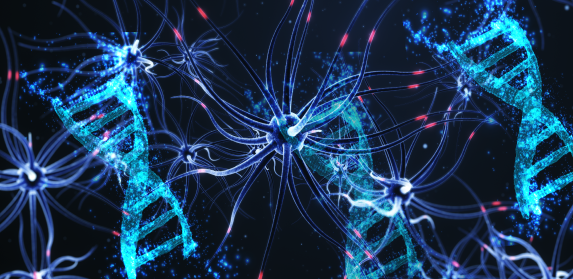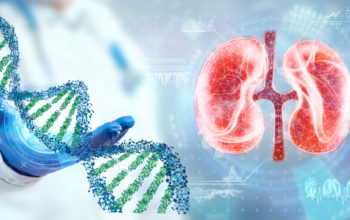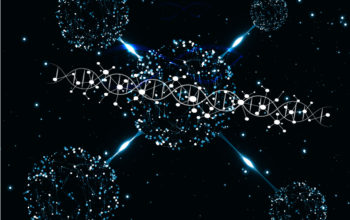
Date: 18th March 2021
The prevalence of chronic pain ranges between 19 and 50% of the world’s population, and its high prominence is the leading cause of disability and disease burden globally. Current treatments heavily rely on opioids, which carry with them substantial side effects and a high risk of addiction. Now scientists, have developed epigenetic strategies to inhibit a key player in nociceptive processing, which reduced hyperalgesia in multiple animal models and reversed chemotherapy-induced chronic pain.
Despite years of research, the objective of achieving effective, long-lasting and nonaddictive therapeutics for chronic pain has remained elusive. Some recent inroads have been made with the discovery that a genetic loss-of-function mutation in a sodium channel protein, NaV1.7, causes insensitivity to pain without other neurodevelopmental alterations. However, there are several voltage-gated sodium channel subtypes and sequence similarities between them means that the development of specific small-molecule inhibitors has not been tangible.
Now, researchers at the University of California San Diego, US, led by Prashant Mali and Tony Yaksh, have developed an epigenetic strategy using CRISPR-dCas9 (dead Cas9) and zinc fingers to inhibit NaV1.7 gene expression in a non-permanent manner, dubbed LATER. The platform was delivered by adeno-associated viruses (AVVs) and was able to effectively reduce pain levels in three mouse models of chronic pain, having strong implications for a new therapeutic approach for long-lasting chronic pain management.
To start, the team designed two independent genetic approaches to inhibit the transmission of pain at the spinal level, namely NaV1.7 repression. The first using a ‘dead’ Cas9, also called dCas9/ or CRISPRi, which cannot cleave DNA but is still sequence driven by guide RNAs (gRNAs), which was fused to the repressor domain Krüppel-associated box (KRAB). The second replaced dCas9 with the DNA binding zinc finger protein, using again KRAB as the repressor (ZFP-KRAB). Both were packed into AAVs for delivery, the Cas system into a dual-AAV platform due to its large size.
In vitro testing
The KRAB-dCas9 constructs (utilising several different gRNAs), and several ZFP-KRAB AAV vector constructs were transfected into a mouse neuroblastoma cell line that expressed NaV1.7 (Neuro2a) and repression of expression was confirmed. The best-in-class KRAB-dCas9 contained 2 gRNAs showing the highest overall repression at ~71% whilst the best performing ZFP-KRAB construct gave ~88% repression. Whilst, these repression efficiencies were encouraging the researchers wanted to test the top constructs in vivo, to understand whether they could be potentially translated into a therapeutic approach.
In vivo validation
In order, to do this they first showed that the constructs were able to transduce into the sensory neurons in the dorsal root ganglion (DRG) – where the primary afferent lies, this is where the pain experience in processed. They injected the AAVs loaded with a reporter gene into the cerebral spinal fluid by lumbar puncture and saw robust transduction. Next, they demonstrated that NaV1.7 expression was lower in these neurons compared with the negative controls.
However, would this ultimately lead to a reduction in pain? To answer this they firstly used a carrageenan-induced model of inflammatory pain in mice. Mice were injected with the therapeutic and control AAVs, then 21 days later were injected into one hind paw with carrageenan, and assessed for thermal pain sensitivity. Thermal hyperalgesia was detected in the carrageenan-injected paws, which was decreased in both cohorts injected with dCas9-KRAB and ZFP-KRAB AAVs. This was concomitant with a decrease in expression of NaV1.7 transcripts assessed by qPCR, ~67% for ZFP-KRAB and ~50% for dCas9-KRAB.
Having established the efficacy of the system in an inflammatory model next the team wanted to see whether it could be used for neuropathic pain that is associated with chemotherapy. The mice were administered with AAVs, then 14 days later with a serial chemotherapy drug at 2 day intervals. Chemotherapy-induced tactile allodynia – a neurological condition where there is a severe sensation of pain to touch – was seen in the control animals, but this was significantly reduced with the therapeutic AAVs seen as a reduction of withdraw responses upon touch in these groups compared with the controls. A similar reduction in these cohorts was seen with chemotherapy-induced cold allodynia.
Finally, the team showed that in vivo repression of NaV1.7 reversed chronic pain in a polyneuropathic pain model. This was efficacious long term, showing durable improvements in pain for up to 44 weeks. A series of toxicity/side effect tests showed no deleterious effects, and they did not induce a change in impulsive or social behaviour. Histological analysis showed no loss of neurons in the DRG, and the nerves remained healthy. Off-target affects were assessed by whole-transcriptome RNA sequencing, which showed fewer off-target transcriptomic perturbations from dCas9-KRAB than with ZFP-KRAB, and that repression was specific to NaV1.7 and not to the other subtypes of NaV1.
Conclusions and future applications
The team here have developed an opioid-free solution using gene therapy to relieve chronic pain. The epigenetic repression of NaV1.7, via the CRISPR-Cas system or zinc finger domains, in lumbar dorsal ganglion reduced thermal hyperalgesia, tactile and cold allodynia, in mice. Potentially providing a new methodology for long-term therapeutic pain management.
The researchers are now planning to optimise both approaches for targeting the human NaV1.7 gene, and will initially extend the work in non-human primates to test for efficacy and toxicity. They hope to enter human clinical trials within the next few years. As the treatment is not permanent they envisage its use for patients with long-lasting (weeks to months) but reversible pain conditions. This could be pain management for diabetic polyneuropathy, erythromelalgia, sciatica and osteoarthritis for example, and for patients undergoing chemotherapy or those with severe injuries.
In fact, Mali and first author Ana Moreno have co-founded the spinoff company Navega Therapeutics to work on translating this gene therapy approach, intop the clinic.
This is an interesting application for CRISPRs, in the main they’ve been applied to edit genes for the treatment of disease, such as for the treatment of Leber congenital amaurosis 10 (LCA10) – an inherited form of blindness or base editing which has restored hearing in mice, and they have also been used for exon skipping in the dystrophin gene associated with Duchenne muscular dystrophy (DMD). This approach, does not edit the genome itself, and dampens rather than eliminates expression. This could therefore, translate into a very powerful tool for gene regulation, without the risk of making irreversible changes.
For more information please see the press release from University of California San Diego
Moreno, A. M., F. Alemán, G. F. Catroli, M. Hunt, M. Hu, A. Dailamy, A. Pla, S. A. Woller, N. Palmer, U. Parekh, D. McDonald, A. J. Roberts, V. Goodwill, I. Dryden, R. F. Hevner, L. Delay, G. Gonçalves dos Santos, T. L. Yaksh and P. Mali (2021). “Long-lasting analgesia via targeted in situ repression of Na<sub>V</sub>1.7 in mice.” Science Translational Medicine 13(584): eaay9056.
https://doi.org/10.1126/scitranslmed.aay9056


